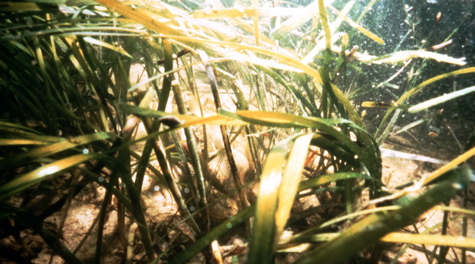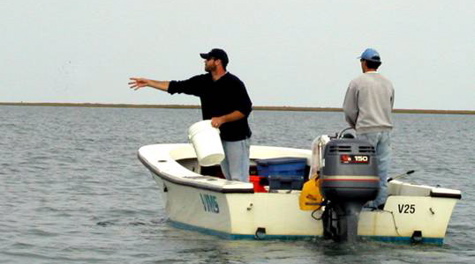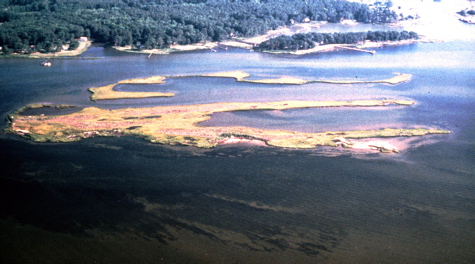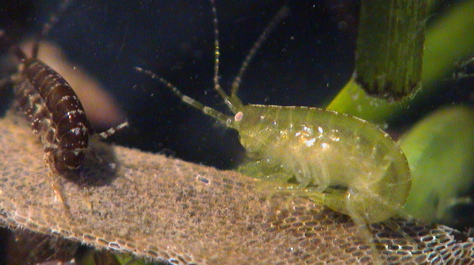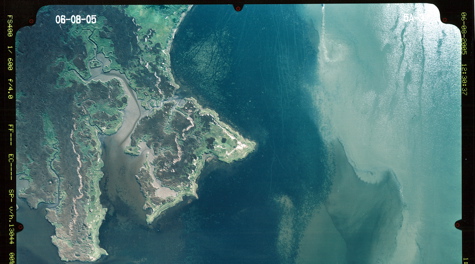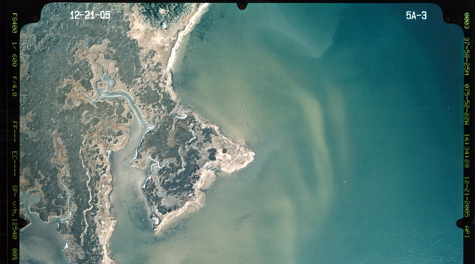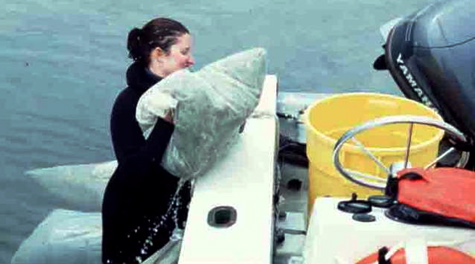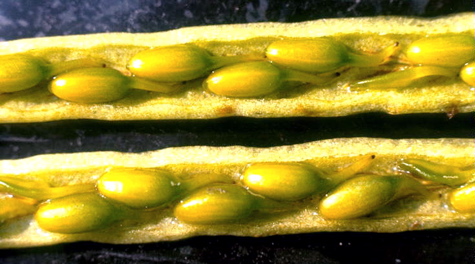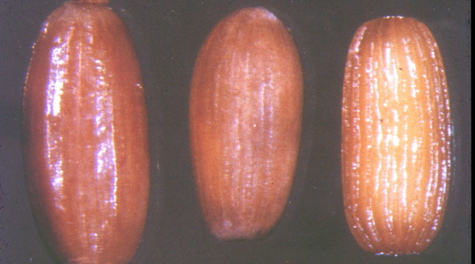Encouraging news on Bay grasses
The Virginia Institute of Marine Science’s annual bay grass monitoring program shows that the abundance of underwater grasses in Chesapeake Bay increased by 18 percent last year, from 64,917 acres in 2007 to 76,861 acres in 2008. This is the fourth largest total acreage of bay grasses recorded since the bay-wide survey began in 1984. Bay grasses are an excellent barometer of Bay health because of their sensitivity to small changes in water quality.
The Chesapeake Bay Program's yearly report on grass health in the Bay is based on aerial surveys conducted by the Submerged Aquatic Vegetation (SAV) program at VIMS, led by Professor Bob Orth. The survey also relies on ground surveys conducted by VIMS staff and by colleagues in Virginia and Maryland. (Interactive maps and data concerning the current as well as past annual surveys are now available via Google Earth at http://www.vims.edu/bio/sav/maps.html.)
The 11,943-acre increase observed between 2007 and 2008 was driven by the continued expansion of bay grasses on the Susquehanna Flats, and the steady recovery of eelgrass and widgeon grass in the middle and lower Bay. Bay grasses increased in all three geographic zones of the Chesapeake Bay for the first time since 2001. The total bay grass abundance is 42 percent of the Chesapeake Bay Program’s goal of 185,000 baywide acres.
Underwater bay grasses serve many essential functions and are among the most closely monitored habitats in the Bay. Grasses provide critical shelter to young striped bass, blue crabs and other key species; improve water clarity by helping sediment settle to the bottom; add oxygen to the water; reduce shoreline erosion and are a major source of food for over-wintering waterfowl.
About 60 percent of grass beds in 2008 were high-density, which is the highest percentage since 1984. These high-density beds are better at removing pollution, filtering sediment, producing oxygen, providing shelter for fish and shellfish, and generating food for waterfowl.
Eelgrass, a species typically found in the saltier waters of the Bay, continued its comeback from a 2005 baywide dieback. Growth of eelgrass, along with widgeon grass, accounted for about 60 percent of the baywide increase. These notable gains include 1,337-acres (11%) in the Tangier-Smith Island region, 1,092-acres (9%) in the eastern lower Chesapeake Bay and 1,794-acres (29%) in Mobjack Bay. Widgeon grass showed a very strong resurgence in the 2,985-acre increase (24%) in the Honga River.
“The continuing recovery of eelgrass in the lower portions of the Bay is an extremely positive sign, particularly in light of the dramatic losses of eelgrass in 2005 following its baywide die-off," says Orth.
Expansion of grass beds by 2,642 acres on the Susquehanna Flats continued a decade-long trend and accounted for 22 percent of the bay-wide increase last year. The trend is due in part to lower amounts of nitrogen entering the Bay from the Susquehanna River. The vast bay grass beds in the Susquehanna Flats may now be improving local water quality enough to allow bay grasses to expand into new areas.
These beds, which include three of the five largest beds in the Bay, are filtering water so effectively that plumes of clear water are visible flowing down-Bay. This has improved conditions for bay grasses in the upper Chesapeake Bay, which showed a 70% increase in 2008, and a notable improvement in water clarity.
"The expansion of bay grasses in most of the fresh water areas in the Chesapeake Bay is impressive and encouraging," said Lee Karrh, a biologist with the Maryland Department of Natural Resources and chair of the Chesapeake Bay Program’s Submerged Aquatic Vegetation Workgroup. “It is particularly good news that 13 Bay fresh water rivers have exceeded the bay grass restoration goals, with another 4 on the verge of passing benchmarks. As we continue to make strides towards reducing pollution, we anticipate these large bay grass beds will persist and maybe even expand in the future.”
While not as dramatic as the upper Bay, the upper Potomac continues to show increases and at 6,517 acres of bay grasses exceeds its restoration goal by 41 percent. This growth is due in part to improvements in wastewater treatment at the Blue Plains facility in Washington, D.C. in 2001.
However, there were areas that had significant decreases in bay grasses. In the middle Bay, bay grass acreage at the mouth of the Choptank River decreased by 63 percent, or 798 acres, from 2007 and the lower Potomac River decreased by 42 percent, or 282 acres. In both of these rivers, water clarity is fair to poor and has not shown improvement over the last decade. Additionally, 21 of the 44 middle Bay segments remained unvegetated in 2008. In the lower Bay, the Chickahominy River lost 269 acres from the previous year and 11 of the 28 segments remained unvegetated.
For more information about the VIMS aerial Bay grass survey, visit www.vims.edu/bio/sav/maps. Additional bay grass resources are www.chesapeakebay.net/baygrass.htm, www.dnr.maryland.gov/bay/sav, and in the 2008 SAV Backgrounder (pdf).
The Chesapeake Bay Program is a regional partnership that has coordinated and conducted the restoration of the Chesapeake Bay since 1983. Partners include the U.S. Environmental Protection Agency, representing the federal government; the U.S. Department of Agriculture; the states of Delaware, Maryland, New York, Pennsylvania, Virginia and West Virginia; the District of Columbia; the Chesapeake Bay Commission, a tri-state legislative body; and advisory groups of citizens, scientists, and local government officials.

